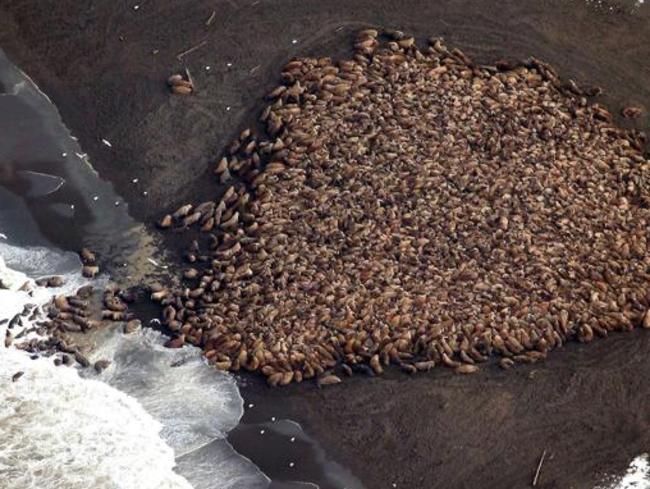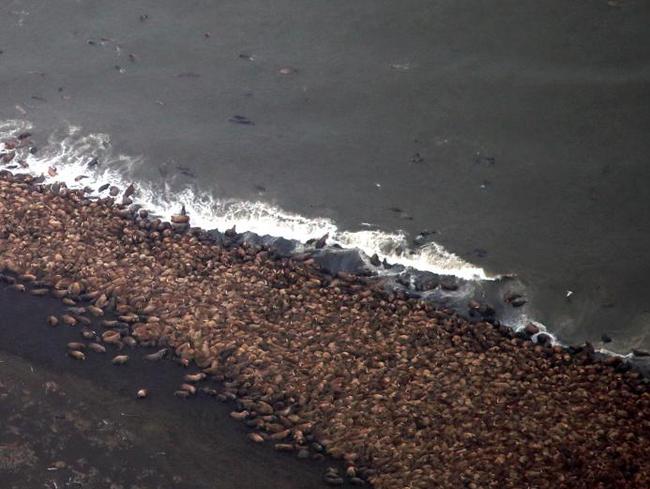35,000 walruses wash up on beach in Alaska
WELL this is something you don’t see everyday. More than 35,000 walruses have been spotted chilling on a beach in Alaska, but what are they really up to?

PACIFIC walruses that can’t find sea ice for resting in Arctic waters are coming ashore in record numbers on a beach in northwest Alaska.
An estimated 35,000 walruses were photographed on Saturday about eight kilometres north of Point Lay, according to the National Oceanic and Atmospheric Administration (NOAA).
Point Lay is an Inupiat Eskimo village 482km southwest of Barrow and 1126km northwest of Anchorage.
The enormous gathering was spotted during NOAA’s annual arctic marine mammal aerial survey, spokeswoman Julie Speegle said by email.

The survey is conducted with the Bureau of Ocean Energy Management, the agency that oversees offshore lease sales.
Andrea Medeiros, spokeswoman for the US Fish and Wildlife Service, said walruses were first spotted on September 13 and have been moving on and off shore.
Observers last week saw about 50 carcasses on the beach from animals that may have been killed in a stampede, and the agency was assembly a necropsy team to determine their cause of death.
“They’re going to get them out there next week,” she said.
The gathering of walruses on shore is a phenomenon that has accompanied the loss of summer sea ice as the climate has warmed. Pacific walrus spend winters in the Bering Sea with females giving birth on sea ice and use ice as a diving platform to reach snails, clams and worms on the shallow continental shelf.
Unlike seals, walrus cannot swim indefinitely and must rest, using their tusks to “haul out,” or pull themselves onto ice or rocks.

As temperatures warm in summer, the edge of the sea ice recedes north. Females and their young ride the edge of the sea ice into the Chukchi Sea, the body of water north of the Bering Strait. In recent years, sea ice has receded north beyond shallow continental shelf waters and into Arctic Ocean water, where depths exceed three kilometres and walrus cannot dive to the bottom. The World Wildlife Fund said walruses have also been gathering in large groups on the Russian side of the Chukchi Sea.
“It’s another remarkable sign of the dramatic environmental conditions changing as the result of sea ice loss,” said Margaret Williams, managing director of the group’s Arctic program, by phone from Washington, DC.
“The walruses are telling us what the polar bears have told us and what many indigenous people have told us in the high Arctic, and that is that the Arctic environment is changing extremely rapidly and it is time for the rest of the world to take notice and also to take action to address the root causes of climate change.”



